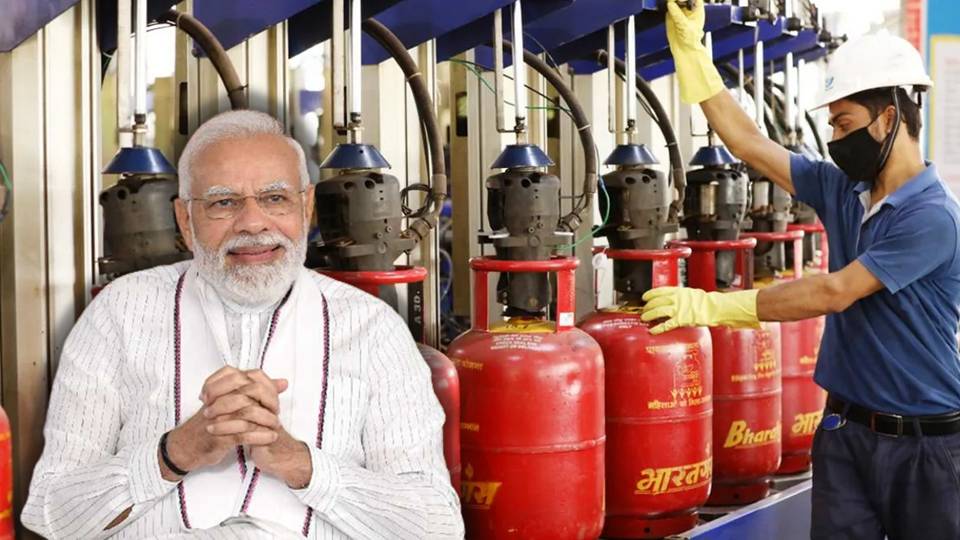When PM Modi took oath as the Prime Minister of India, he gave a slogan called “sabka saath, sabka Vikas”. Apparently, that was the call for Indians to unite and come forward for the nation’s development. Cylinders available in average Indian home became a focal point. The initiative has now started to pay off. The astounding results of the Modi-Public collaboration are reflected in numbers as well.
Huge savings on LPG cost
Petroleum Ministry has shocked the nation with revelation that the Modi government had to allot only Rs 242 crore for subsidizing LPG cylinders in the financial year 2022. The number was nearly 50 times less than Rs 11,896 crores spent by the government in FY21. Moreover, if we compare the current numbers with previous year’s data, we find that cost of LPG subsidy has been declining at astronomical rate. In FY 2019, government had to chalk out Rs 37,209 from its exchequer to avail cylinders in the last miles of the country. Within 3 years, the cost has come down by Rs 36,967 crores, a humongous sum, especially when you consider that India suffered loss in GDP due to Covid lockdowns.
Stating that government is still doing its bit to keep LPG prices within the reach of average consumer, Rameswar Teli, Union minister of state for petroleum and natural gas, said, “The prices of petroleum products in the country are linked to the price of respective products in the international market. However, the government continues to modulate the effective price to consumers for domestic LPG,”
Used to be burden during UPA
There was a time when LPG was a big burden for both consumers as well as governments of the day. Availing LPG to average consumer was extremely complicated as it involved a chain of companies engaged in production and redistribution. Moreover, unavailability of transport infrastructure in the hinterlands forced governments to subsidise the cylinders. As is the case with every subsidised product, the cheap prices led to looting of these cylinders, and sometimes consumers had to wait in queue for hours to get a cylinder.
Wave of LPG reforms by taking help of the public
After the Modi government came to power, it took LPG reforms on a war-footing. It took a two-front approach. It launched ‘Give Up LPG Subsidy’ campaign and appealed to affluent and capable Indian families to stop buying subsidised cylinders and buy it at market rate. The initiative reached to its crescendo quickly and by 2016, nearly 1 crore and 4 lakh Indians had stopped using subsidised cylinders. For those who did not surrender, government waited and waited and in June 2020, it stopped distributing subsidised cylinders to them. Only beneficiaries of Pradhan Mantri Ujjwala Yojana (PMUY) can avail subsidised cylinders now.
The Government used the saved money to provide free LPG connections to more than 5 crore households falling below poverty line. The Government performed better than its target and provided connections to more than 8 crore households. According to numbers available till December last year, more than 85 per cent of Indian homes have LPG connections. Though, a significant portion of them do not use it as primary cooking fuel, still 71 per cent of households use it. This is nearly 150 per cent increase over 30 per cent families using it.
Also Read: PM Modi’s Ujjwala Yojana is a silent war on pollution
A big trust builder
The Government’s job was also made easier by the increased infrastructure catering to LPG distribution. During UPA era, consumers faced problems due to highly centralised system of distribution. The Modi government changed the scenario by opening more than 11,000 more distribution centres across the country. They made it possible for poorest to avail LPG at the home. The Government bore the extra cost by providing Direct Benefit Transfer in their bank accounts.
LPG reforms are an amazing story. It will go down in history as one of those initiatives in which public took a view alternate to what media portrays them to be like. Part of the credit goes to government as well. With so much trust, other governments would have been swayed away, just like UPA2 did, but Modi government did not.
Support TFI:
Support us to strengthen the ‘Right’ ideology of cultural nationalism by purchasing the best quality garments from TFI-STORE.COM
